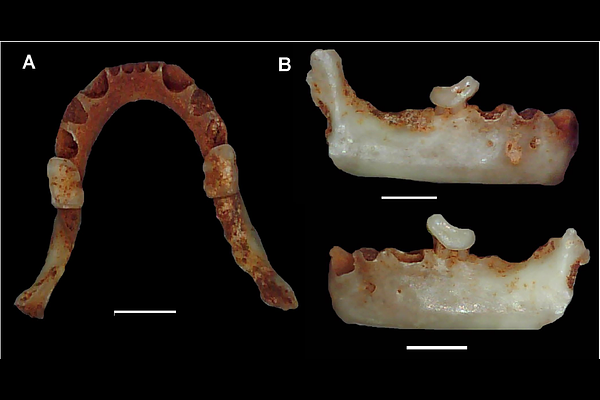NOTE ON A SMALL FRUIT-EATING BAT FROM THE MIDDLE HOLOCENE OF LAGOA SANTA, EASTERN BRAZIL

NOTE ON A SMALL FRUIT-EATING BAT FROM THE MIDDLE HOLOCENE OF LAGOA SANTA, EASTERN BRAZIL
Chahud, A.
AbstractBats represent the second most diverse order of mammals; however, their fossil and subfossil remains are still relatively understudied. In Brazil, numerous living species have been identified in cave deposits, although few fossils have been dated, with none originating from the Holocene. This study presents a specimen from the Middle Holocene, collected from Cuvieri Cave. The fossil comprises an incomplete, U-shaped mandible containing the first molars. The specimen was identified as Artibeus sp., a genus of fruit-eating bats currently common throughout Brazilian territory. This specimen dates to a poorly understood period in the Lagoa Santa region, when human populations had abandoned the area (referred to as the Archaic Gap) and during which the faunal population of Cervidae experienced a notable decline in the number of fossil records. The genus Artibeus has a wide distribution in tropical regions and is typically found in environments such as semi-arid regions, savanna, and dense forests. It is not considered a paleoenvironmental indicator.